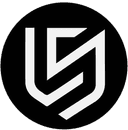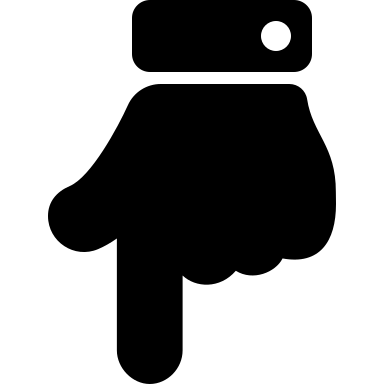In the bright starry sky of modern manufacturing industry, injection molding technology has undoubtedly become a bright star. With its high efficiency, flexibility and accuracy, it brings light to all aspects of plastic product manufacturing. As an ancient yet young technology, injection molding has become one of the most widely used plastic processing methods in the world due to its many advantages that are unparalleled by other manufacturing methods. So,what is injection molding?This blog will provide an in-depth analysis of this key craft to reveal the mystery and appeal behind it.
What is injection molding?
In the vast field of manufacturing,moldingtechnology occupies a pivotal position.Molding meaning covers the entire process of transforming raw materials into products with specific shapes, structures and functions. Specific toinjection molding, it is an important method inplastic molding technology. It heats plastic particles to a molten state, injects them into the mold cavity under high pressure, and solidifies after cooling to produce various precision and complex plastic products.
In addition,silicone molding, as another special molding technology, focuses on the processing of silicone materials. Silica gel is widely used in medical, food, electronics and other fields because of its excellent high temperature resistance, aging resistance, environmental protection and non-toxic properties. The silicone molding process also requires precise control of temperature, pressure and other parameters to ensure the quality and performance of the final product. Whether it is injection molding, plastic molding or silicone molding, they are all important components ofmolding technology. Each plays an irreplaceable role in different fields and jointly promotes the progress and development of the manufacturing industry.

How Does the Injection Molding Process Work?
Theinjection processis a complex and delicate manufacturing process, which mainly includes four key steps: leakage, injection, and ejection. The following is a detailedinjection moulding process step by step introduction:
Clamping
Clamping, also called mold closing, is the first step and preparation stage of injection molding. At this stage, both sides of the mold are placed into the mold clamping unit, and the machine then pushes the two halves of the mold together to ensure that the mold is tightly closed and ready for the subsequent injection process. The tightness of the mold clamping will directly affect the melt flow and molding quality of the subsequentplastic injectionprocess. If the mold is not closed tightly, it will cause the plastic melt to leak, affecting the integrity and appearance of the product.
Injection
The injection stage is the most critical step in injection molding. The injection molding machine feeds the plastic raw materials into the injection molding cavity. The raw materials are heated and melted in the injection molding cavity, and then injected into the closed mold cavity at high pressure and high speed through the nozzle. During the injection process, the plastic melt needs to fill the mold cavity and cover all mold cavity surfaces to ensure that the product can be formed correctly.
Dwelling
In the dwelling phase, the melted plastic fills the entirety of the mold. Pressure is applied directly to the mold to ensure the liquid fills every cavity and the product comes out identical to the mold.
Cooling
After injection is completed, the mold needs to be left alone to cool. During this stage, the plastic melt inside the mold gradually cools and solidifies into a solid form. The length of cooling time depends on the type and thickness of the plastic material and the cooling efficiency of the mold.
Mold Opening
Once the part has cooled down, the clamping motor slowly opens both parts of the mold for safe and simple removal of the final product.
Ejection
With the mold open, an ejector bar will slowly push the solidified product out of the open mold cavity. The fabricator should then use cutters to eliminate any waste material and perfect the final product for customer use. Waste material can often be recycled and reinjected for the next part, decreasing your material costs. The vividinjection molding diagram is shown below:

Why is the injection molding process so important?
Injection moldingexhibits multiple advantages in mass productionthat make it an integral part of modern manufacturing. The following are the main advantages of injection molding in mass production:
| Advantages | Elaboration |
| Efficient production | Injection molding is praised for its fast manufacturing cycle, usually between 30 seconds and 1 minute per production cycle. |
| High precision | Through injection molding technology, products with complex shapes and precise dimensions can be manufactured. |
| Complex parts | This method can design complex shapes and structures, especially thin shell parts of various types of equipment. |
| Material versatility | It can handle a variety of mold and thermoset materials including PS, ABS, PA, PP, PE, PVC components. |
| Low waste | The goal of this process is to significantly reduce the loss of material, thus helping to reduce costs and provide benefits to the environment. |
| Mass Production | Once the mold is successfully created and configured, the injection molding machine is able to manufacture large quantities of parts in a very short time to meet the needs of mass production. |
How to optimize the injection molding design?
The optimization ofinjectionmolding designis a complex and systematic process, involving many aspects such as mold design, material selection, process parameter adjustment, and the application of automation and intelligent technology.
Optimization of molding design:Optimize the cross-section and length of the flow channel through simulation analysis to reduce shear and heat loss of the material during the flow process. Select high-performance alloys as mold materials to improve the wear resistance and corrosion resistance of the mold, extend its service life, and reduce the frequency of replacement, thereby reducing long-term costs.
Optimization of process parameters:Find the best combination of injection speed and pressure through experiments and simulation analysis to achieve uniform filling of materials and avoid defects such as bubbles and shrinkage in the product. Precisely control the temperature of the mold and material to ensure that the material is formed in the best condition. Set the holding time and cooling time reasonably to ensure that the product is fully solidified and reduce internal stress and deformation.
Optimization of material selection:Select appropriate plastic materials based on product characteristics, such as high-strength plastics, high-temperature-resistant plastics or biodegradable plastics, to meet the needs of different application scenarios.
What are the Key Components of Injection Molding Machines?
Injection molding machine parts and functionsinclude:
1.Injection unit
Hopper:This place is used to fill the various raw materials into the mechanical equipment. The hopper is responsible for transporting various materials into the bucket.
Cartridge:The screw is installed inside the drum and heated through a series of electric heaters. When the screw rotates, it drives the material forward and melts the material in the process.
Screw:When the screw rotates, it pushes the material forward and puts some pressure on it to inject the melted material into the mold. The tool enables a mixture of the polymer and other components to form a continuous flow channel at its extrusion end to obtain the product of the desired shape. Moreover, it also helps to ensure the uniformity of the mixed material.
Nozzle:It is the tip that connects the injection device to the mold. It ensures that the melted material effectively enters the inside of the mold.
2.Mold clamping unit
Template:This template consists of dynamic template and fixed template, which together form the fixed space of the mold. The dimensional accuracy and surface quality of injection molded products are significantly affected by the accuracy and stiffness of the template.
Mold:The mold is the core component of injection molding, which determines the shape and size of the product. During the injection molding process, molten plastic is injected into the cavity of the mold and cools to form the desired product.
Mold clamping mechanism:The mold locking mechanism is a key part of the mold clamping unit. It is responsible for tightly locking the upper mold and the lower mold together to ensure that the mold will not be separated due to the high pressure of the plastic during the injection molding process, thus ensuring the quality and stability of the product.
3.Hydraulic system
Oil pump:The oil pump is the power source of the hydraulic system. Its function is to convert the mechanical energy of the prime mover (such as an electric motor, internal combustion engine, etc.) into the pressure energy of the liquid to provide power for the entire hydraulic system.
Oil tank:The oil tank is a container used to store hydraulic oil in the hydraulic system. It not only plays the role of storing and supplying hydraulic oil, but also has certain functions such as heat dissipation, precipitation of impurities, and gas separation.
Hydraulic Valve:A hydraulic valve is a device whose main function is to control the flow direction and pressure exerted by hydraulic oil, thereby enabling the injection molding machine to perform various operations. The accuracy and stability of the hydraulic valve directly determines the stability of the injection molding process and the quality of the final product.
4.Electrical control system
PLC:PLC: As the key control module of the injection molding machine, PLC is mainly responsible for receiving input signals and controlling output devices to realize automatic control of the injection molding machine. PLC programming technology and functional configuration play a key role in the adaptability of the injection molding process and product diversity.
Touch screen:The touch screen is a human-computer interaction interface used to set injection molding parameters, monitor the injection molding process and display fault information. The intuitiveness and ease of use of the touch screen improve the operator's work efficiency and the intelligence level of the injection molding machine.
Sensor:Sensors are used to monitor the operating status and process parameters of the injection molding machine in real time, such as temperature, pressure, flow, etc. The accuracy and response speed of the sensor have a direct impact on the stability of the injection molding process and the quality of the product.

Common application areas of injection molding
Automobile manufacturing:molding injectionplays an important role in automobile manufacturing and is used to produce variousplastic moldings, such as dashboards, bumpers, door interior panels, etc. Not only do these parts require high precision and beautiful appearance, they also need to meet strict durability and safety requirements.
Electronic and electrical appliances: In the field of electronic and electrical appliances, injection molding is used to produce various housings, connectors, switches and other components. These parts need to be of precise size and shape to ensure the performance and reliability of electronic products.
Daily necessities: Injection molding is also widely used in the production of daily necessities, such as plastic cups, bowls, plates, toys, etc. These products usually require low cost and high production efficiency, and injection molding just meets these needs.
Medical devices: Injection molding also has important applications in the field of medical devices, such as medical syringes, infusion set shells, surgical instrument handles, etc. These products are required to be non-toxic, resistant to high temperatures and chemical corrosion, and the injection molding process ensures that these products meet strict medical standards
How to choose a plastic mold manufacturer?
1.Professional Competency Assessment
Understand the professional ability and experience of service providers in the field of injection molding, including the product types, materials, processes and other they are good at. Investigate the r & d and development capabilities and technological innovation capabilities of service providers, which can be achieved by reviewing their technology patents, r & d results and cases.
2.Production Capacity Investigation
Understand the production scale, equipment configuration, and line automation to ensure they can meet your production needs. Ask the service provider about production cycles and delivery times to ensure they can deliver on time.
3.Quality Control System
Understand the quality management system and certification of service providers, such as ISO 9001, to ensure that they have perfect quality assurance capabilities. Ask the service provider about the quality testing methods and standards, as well as their defective product processing procedures, to ensure that the product quality meets your requirements.
4.Service And Support
Understand the pre-sales and after-sales service support of service providers, including technical support, training, maintenance, etc. Investigate the response speed and problem-solving ability of the service provider to ensure timely and effective support in the cooperation process.
5.Cost And Price
Ask service providers for quotes and cost structure to see if their prices are reasonable. When comparing prices, do not just pursue the lowest price, but to consider the comprehensive cost performance, including product quality, delivery time, service support, etc.
6.Sustainability
Understand the environmental policies and sustainability practices and ensure that their production process complies with environmental regulations.
Investigate the measures and results of service providers in resource conservation, energy utilization and waste treatment.
7.Word Of Mouth And Credibility
To understand the service provider’s reputation and reputation in the industry, we can obtain relevant information by consulting customer reviews, industry reports, media reports, etc. If possible, you can visit the service provider’s production site and management situation, so that you can have a more intuitive understanding of their strength and level.

Why choose LS custom injection molding service?
- Quick quotation:Just upload the CAD file to quickly understand the manufacturing cost and keep track of the order status at any time.
- Rapid prototyping:has extensive experience in prototype manufacturing, ensuring that your components are completed with high quality in the later stages of the design and manufacturing process.
- Customized on demand:Our auto parts manufacturing process can be fully customized according to your specifications, dimensions, materials and surface requirements to ensure that your unique needs are met.
- Fast delivery:We are committed to providing, fast manufacturing and delivery to meet your production needs while providing you with greater flexibility to respond quickly to market changes. Jusheng is your partner for your auto parts needs.
FAQs
1.What is injection molding?
Injection molding is a process in which plastic particles are heated to a molten state, injected into the mold cavity at high pressure and high speed, and then cooled and solidified to obtain products with corresponding structure, appearance and size.
2.What is two-color molding?
Two-color molding, the full name of two-color injection molding, is a special molding plastictechnologythat involves injecting two different colors or types of plastics into the same mold, and combining the two plastics in the mold through a specific process. Form products with two-color or two-material effects. This technology can significantly improve the aesthetics and practicality of products, giving them unique visual effects and textures.
3.What are the main 5 steps of injection molding?
① Clamp: Before injection, ensure that the two halves of the mold are firmly clamped by the clamping device.
② Injection molding: injection molding machine will be plastic raw materials into the injection molding cavity, the raw materials in the injection molding chamber is heated and melted, and then through the nozzle in high pressure, high speed way into the mold of the mold cavity.③ Cooling: After the injection is completed, the mold needs to be placed separately for cooling. At this stage, the plastic melt inside the mold gradually cooled and solidifies into a solid form.④ Mold Opening: Once the parts cool down, the clamped motor will slowly open both parts of the mold to safely and simply remove the final product. Ejection⑤With the mold open, an ejector bar will slowly push the solidified product out of the open mold cavity. The fabricator should then use cutters to eliminate any waste material and perfect the final product for customer use. Waste material can often be recycled and reinjected for the next part, decreasing your material costs.
How are injection molds made?
The manufacturing of injection molds is a complex and delicate process. First, designers design drawings according to needs, select appropriate mold materials based on product characteristics and production needs, and then purchase corresponding mold materials based on mold design requirements. Processing equipment is used again for rough machining and finishing. For some mold materials that need to be improved in hardness and wear resistance, heat treatment is also require and the processed mold parts need to be assembled and debugged. Finally, after the trial mold production is verified to be correct, mass production can be carried out.
Summary
Injection molds are important tools in the plastic processing industry. Through precise design and fine processing, they can produce various plastic products with complex shapes and precise dimensions. The manufacturing process of injection molds involves multiple links and processes, requiring the close cooperation and joint efforts of multiple professionals. With the continuous advancement of science and technology and the continuous development of the plastic processing industry, the design and manufacturing technology of injection molds are also constantly innovated and improved, providing more efficient, precise and reliable solutions for the production of plastic products.
Disclaimer
The content on this page is for reference only. LS does not make any express or implied representation or warranty as to the accuracy, completeness or validity of the information. No performance parameters, geometric tolerances, specific design features, material quality and type or workmanship should be inferred as to what a third party supplier or manufacturer will deliver through the Longsheng Network. It is the responsibility of the buyer seeking a quote for parts to determine the specific requirements for those parts.Please contact us for more information.
LS Team
This article was written by multiple LS contributors. LS is a leading resource in the manufacturing sector, withCNC machining,sheet metal fabrication,3D printing,injection molding,metal stamping, and more.





